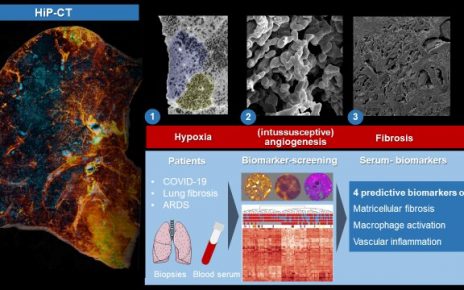In a recent study published in the United States (U.S.) Centers for Disease Control and Prevention (CDC) journal Emerging Infectious Diseases, researchers determined the mean incubation period and the serial interval estimates of the mpox virus.

Background
The CDC estimated that the 2022 global outbreak of mpox resulted in over 85,000 cases and 182 mortalities by January 2023 from non-endemic and endemic distributions of the virus. Mpox generally results in headaches, fever, swollen lymph nodes, chills, and fatigue within the first three weeks of exposure. Rashes and lesions develop within one to four days after symptom onset, and the disease is transmitted through contact with scabs, lesions, body fluids, fomites, and respiratory droplets. During the current outbreak, transmission has largely occurred through sexual contact among men who have sex with men, bisexual, and gay individuals.
The epidemic phase, contact patterns between infected individuals and others, and the incubation period, which is the time between infection and onset of symptoms, are all involved in determining the serial interval, which is the period between the onset of symptoms in the primary case patient and that in the secondary-case patient. Estimating the serial interval is important in determining the effective reproduction number and predicting the incidence rates, which help plan disease mitigation measures and interventions.
About the study
In the present study, researchers used data comprising self-reported rash onset and other symptoms obtained from the local and state health departments of 12 U.S. states to estimate the incubation period and serial interval of the mpox virus. One of the challenges faced in previous studies was the identification of primary and secondary case pairs since many of the mpox patients had reported attending large events and having anonymous sexual partners. A study from the United Kingdom (U.K.) identified 17 pairs of primary and secondary cases, while an Italian study included 16 pairs.
By using rash onset as a specific mpox symptom, the researchers identified 57 cases that met their stringent inclusion criteria. The serial interval was calculated for each pair by determining the days between the onset of rashes or any other symptoms between the primary and secondary case-patients. Of the 57 pairs, 40 had data for both primary and secondary case-patients on rash onset dates.
The incubation period was calculated from data on 22 cases of mpox from the U.S. reported in a previous study, and 14 new cases.
Results
The findings reported that the estimated mean serial interval for rash onset was 7.0 days, and symptom onset was 8.5 days, while the mean incubation period was 5.6 days between exposure to mpox virus and symptom onset, and 7.5 days between exposure and onset of rashes.
The serial interval estimates were similar to the U.K. study but shorter than those reported in the study from Italy. The researchers believe that the serial interval is correlated to human behavior, and improved interventions and increased awareness can improve the serial interval estimates.
The authors discussed various limitations of the study. Since the initial symptoms of mpox are non-specific and could be unrelated to the infection, it is difficult to ascertain the onset of symptoms and rashes precisely. Additionally, exposure of the secondary case-patient to the mpox virus could have occurred from an unknown additional source despite the stringent selection of primary and secondary case-patient pairs, which would affect the estimates of serial interval. Furthermore, the analysis was not stratified by factors such as vaccination status, age, contact route, or underlying health conditions — all of which could have influenced the serial interval estimates.
Conclusions
To summarize, in this study, researchers used health record data from 12 U.S. states to identify 57 pairs of primary and secondary mpox case-patient pairs to estimate the incubation period and serial interval of mpox virus. The findings indicated that the incubation periods for the onset of symptoms and rashes were 5.6 and 7.5 days, respectively, while the serial intervals between the onset of symptoms and rashes in the primary and secondary case-patients were 8.5 and 7.0 days, respectively. These findings could help in formulating intervention and mitigation strategies for the current mpox outbreak.
- Madewell ZJ, Charniga K, Masters NB, Asher J, Fahrenwald L, Still W, et al. (2023). Serial interval and incubation period estimates of monkeypox virus infection in 12 jurisdictions, United States, May–August 2022. Emerging Infectious Diseases. doi: https://doi.org/10.3201/eid2904.221622 https://wwwnc.cdc.gov/eid/article/29/4/22-1622_article
Posted in: Medical Science News | Medical Research News | Disease/Infection News
Tags: Body Fluids, Fatigue, Fever, Infectious Diseases, Lymph Nodes, Mpox, Rash, Reproduction, Respiratory, Virus
.jpg)
Written by
Dr. Chinta Sidharthan
Chinta Sidharthan is a writer based in Bangalore, India. Her academic background is in evolutionary biology and genetics, and she has extensive experience in scientific research, teaching, science writing, and herpetology. Chinta holds a Ph.D. in evolutionary biology from the Indian Institute of Science and is passionate about science education, writing, animals, wildlife, and conservation. For her doctoral research, she explored the origins and diversification of blindsnakes in India, as a part of which she did extensive fieldwork in the jungles of southern India. She has received the Canadian Governor General’s bronze medal and Bangalore University gold medal for academic excellence and published her research in high-impact journals.
Source: Read Full Article



